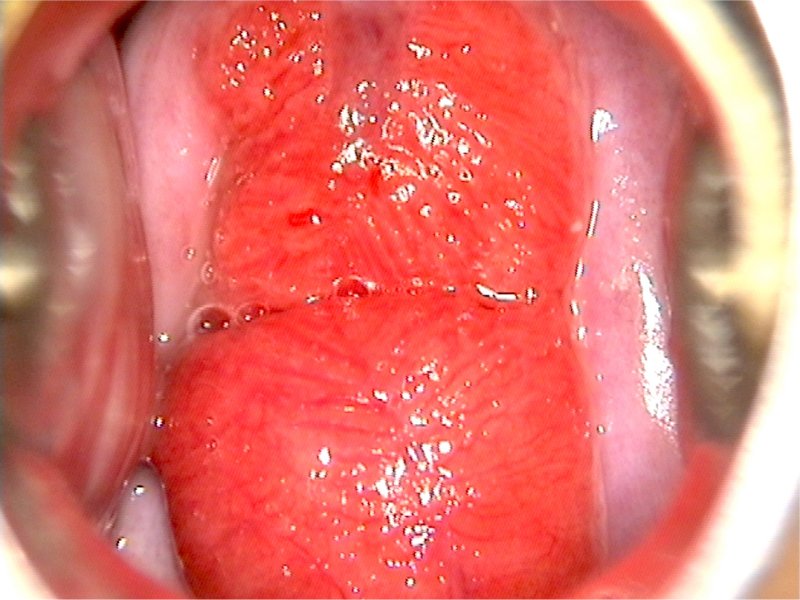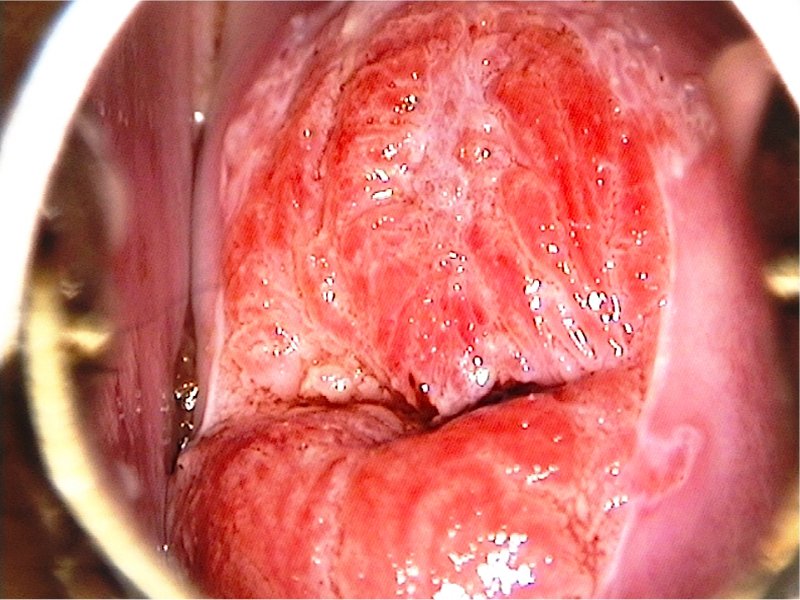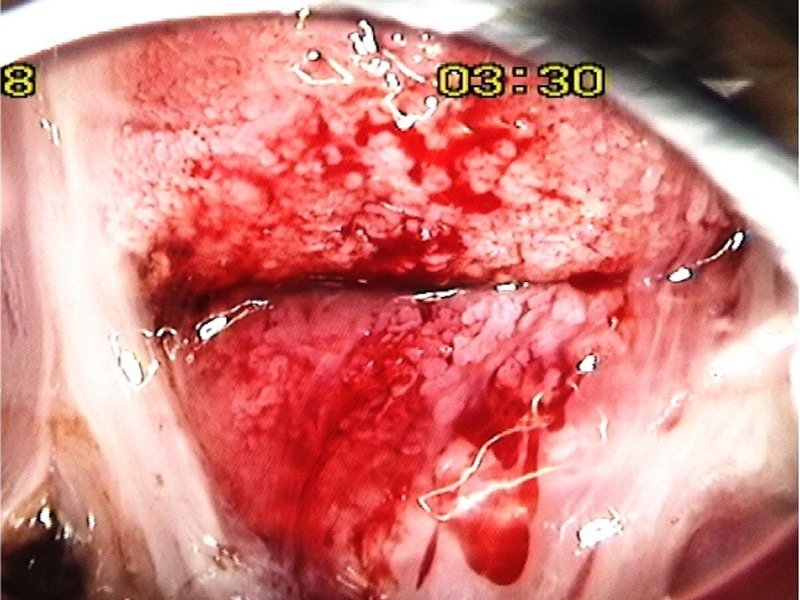Learning colposcopy
Colposcopic appearance of normal cervix
The colposcopic examination
Detection of infections & benign conditions of cervix
Detection of cervical neoplasias
Treatment of cervical intraepithelial neoplasia
Treatment by cryotherapy
Treatment by thermal ablation
Treatment by LLETZ (LEEP)
Treatment by cold-knife conization (CKC)
Cases
Normal
Squamous metaplasia and ectropion
Inflammation and cervicitis
Low grade
High grade
Early and advanced cancers
Miscellaneous
Post treatment
Search with IFCPC criteria
Search with Swede score criteria
Quiz Foreword
Acknowledgement
Authors
Suggested citation
Home
Atlas of Colposcopy: Principles and Practice
Filter by language: English / 中文 / Français / Español / Português / Русский| Ectropion or ectopy |
The cervix increases in size because of the influence of estrogen (at menarche and during each pregnancy). The columnar epithelium extends onto the ectocervix for a variable distance from the external os. The presence of columnar epithelium on the ectocervix is called ectropion or ectopy. Ectropion is a normal physiological condition. The SCJ moves outwards towards the periphery of the cervix and becomes easily visible. On colposcopy, ectropion appears as a red patch at the centre of the cervix after the cervix is cleaned with normal saline. After application of acetic acid, the typical characteristics of columnar epithelium become obvious. Columnar epithelium may be white in patches after application of acetic acid. The position of the SCJ on the ectocervix depends on the size of the ectropion. The SCJ of a fully developed ectropion is called the “original” SCJ. The “new” SCJ will form subsequently because of a process called metaplasia (discussed later). The columnar epithelium of an ectropion remains red even after application of Lugol’s iodine. Rubbing the columnar epithelium with a cotton swab may induce bleeding, which is more commonly seen in an inflamed cervix.
|
25 avenue Tony Garnier CS 90627 69366, LYON CEDEX 07 France - Tel: +33 (0)4 72 73 84 85
© IARC 2025 - Terms of use - Privacy Policy.
© IARC 2025 - Terms of use - Privacy Policy.








